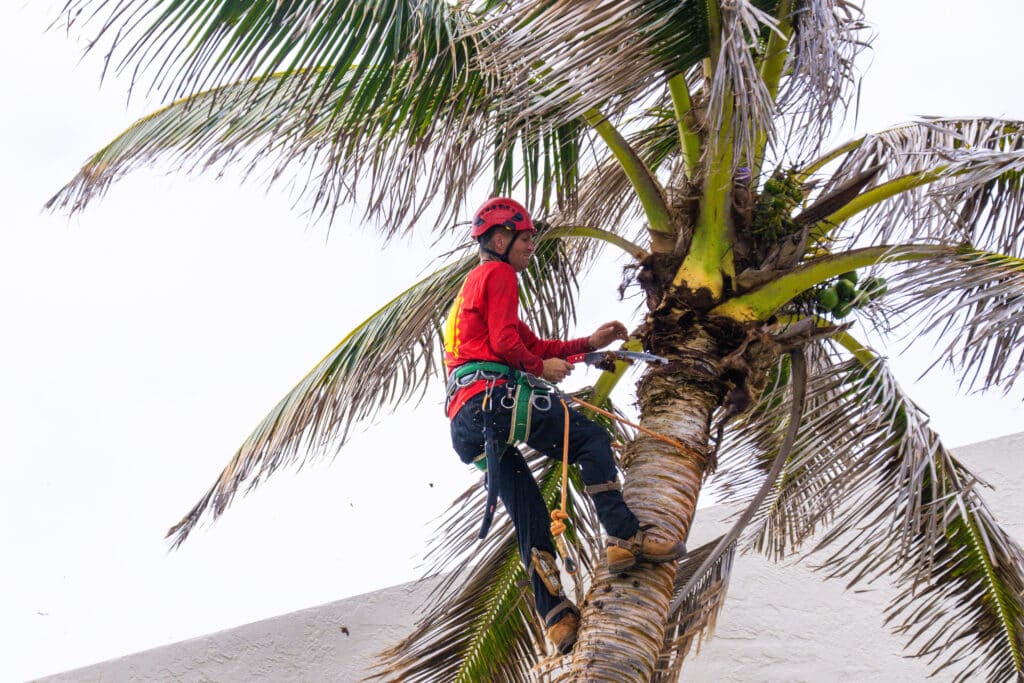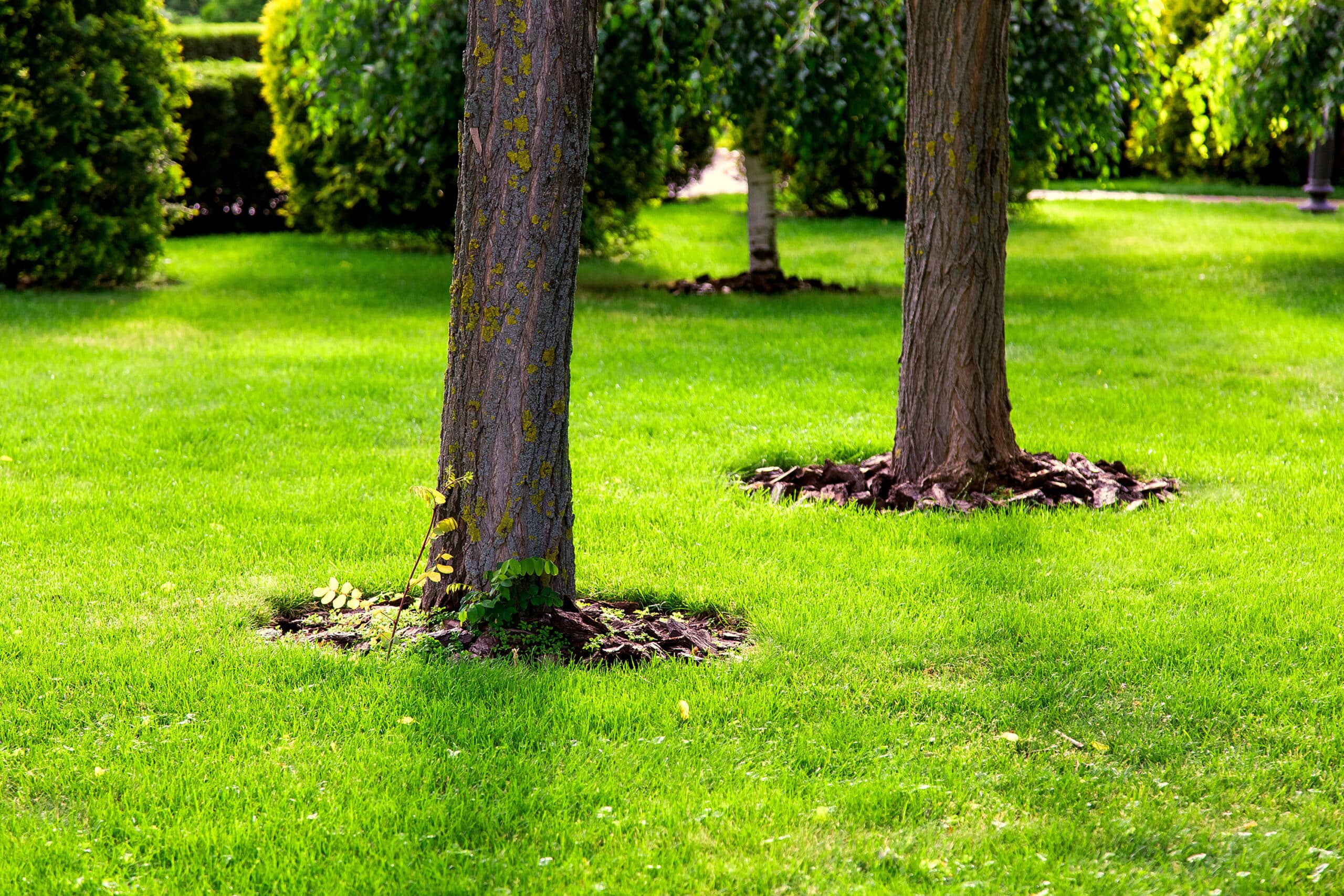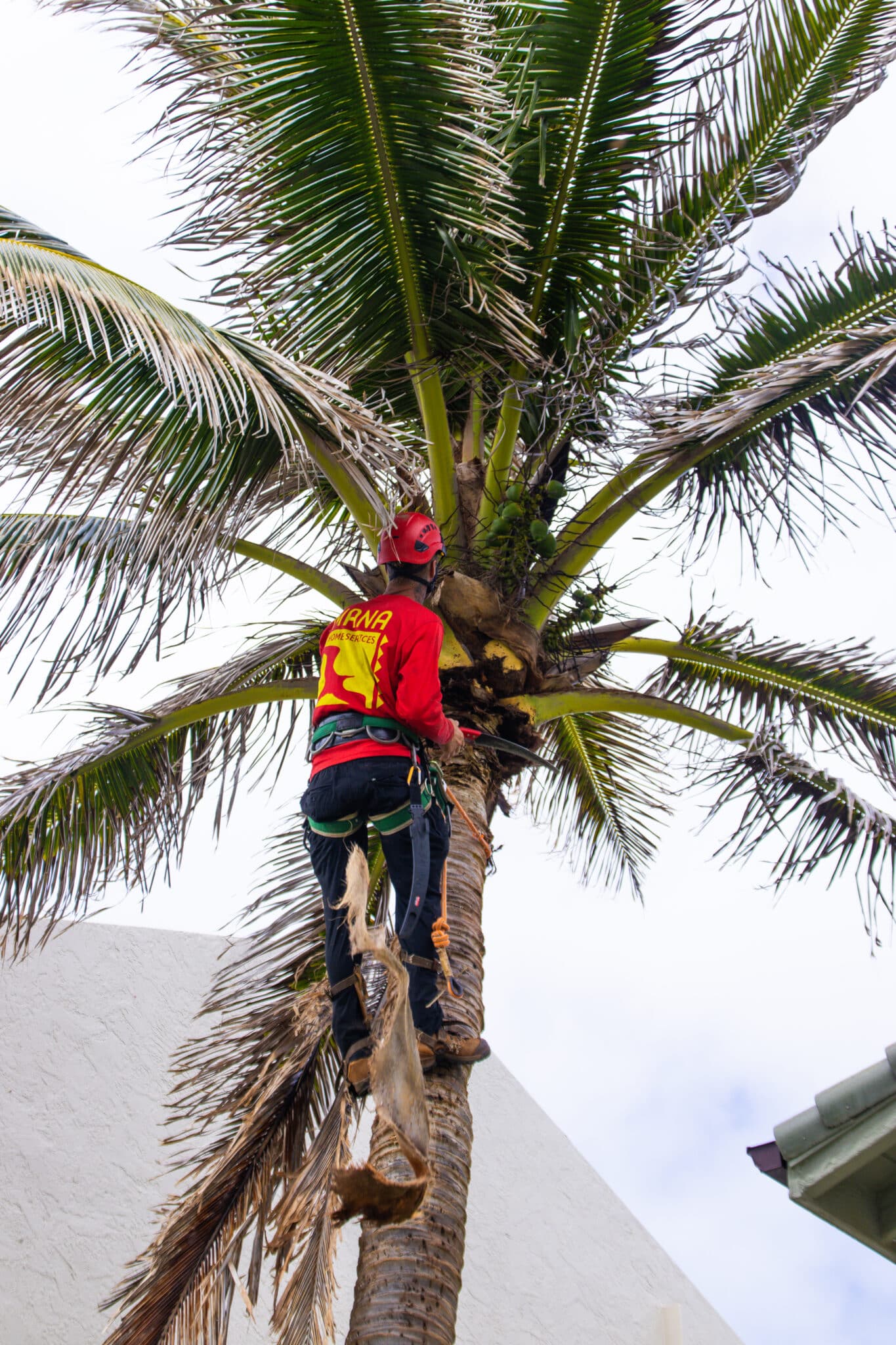As summer approaches in Hawaii, the rising temperatures can pose significant challenges for the lush and diverse Hawaii trees that adorn landscapes from Kahala to Mililani. The intense heat not only stresses these majestic beings but can also impede their growth and affect their overall health. Preparing your trees for these conditions is crucial to maintaining a vibrant and resilient garden. This guide offers essential tips on how to care for your Hawaii trees, ensuring they remain healthy and flourish throughout the scorching summer months.
Understanding the specific needs of your trees during the summer is the first step towards effective care. Hawaii trees, whether native species or ornamental varieties, require particular attention to withstand the heat. By adopting proactive care strategies such as proper watering, timely mulching, and seasonal pruning, homeowners can significantly boost their trees’ resilience. These practices not only help in retaining moisture and protecting roots from extreme temperatures but also aid in preventing diseases and promoting robust growth.
Watering, for instance, is more crucial during the hot months, as water evaporates faster and trees have increased hydration needs. A deep-watering technique can be particularly effective, encouraging roots to grow deeper into the soil, away from the scorching surface. Similarly, mulching plays a vital role by insulating the soil, maintaining moisture levels, and keeping the roots cool. Organic mulches also enrich the soil as they decompose, further enhancing the health of Hawaii trees.
Seasonal pruning, while often overlooked, is another essential aspect of preparing Hawaii trees for summer. Removing dead or weak branches before the summer can prevent potential damage from summer storms and reduce the overall stress on the tree. This practice not only helps in maintaining the structural integrity of the trees but also ensures that nutrients are directed towards healthy growth. By following these simple yet effective care strategies, homeowners in Hawaii can enjoy lush, healthy trees that enhance their outdoor spaces all summer long.
Understanding the Unique Climate Needs of Hawaii Trees
In Kahala, as in other parts of Hawaii, the unique climatic conditions during summer significantly affect the care requirements of Hawaii trees. The islands’ geographical position exposes them to intense solar radiation and occasional dry spells, making it imperative to understand and adapt to these unique climate needs. For homeowners, recognizing the signs of heat stress in trees, such as wilting leaves or brittle branches, is crucial. Early detection allows for timely intervention, ensuring trees can withstand the harsh conditions.
The microclimates across Hawaii can vary dramatically, even within short distances. In Mililani, for instance, the climate might be slightly cooler compared to coastal areas, affecting how trees respond to summer heat. This variability means that the care strategy for Hawaii trees must be tailored to their specific location. Utilizing local weather data can help in making informed decisions about watering schedules and protective measures, like shade netting, especially for young or vulnerable trees.
For Hawaii trees to thrive, understanding soil conditions and their impact on water retention is also vital. Different areas of Hawaii have varying soil types, some may drain quickly, while others retain moisture longer. Homeowners should consider having their soil tested to determine its type and adjust their watering practices accordingly. Enhancing soil health with organic matter can improve moisture retention, which is beneficial during the hot months.
Moreover, being proactive about the health of Hawaii trees before the peak of summer can make a significant difference. Implementing a regular inspection schedule to check for pests, diseases, or nutritional deficiencies is advisable. Healthy trees are better equipped to cope with stress and recover from damage, ensuring they continue to enhance Hawaii’s beautiful landscapes throughout the summer and beyond.
The Importance of Proper Watering Techniques
Proper watering techniques are essential for maintaining the health and vitality of Hawaii trees, especially during the intense summer heat. In areas like Kahala, where the sun beats down relentlessly, ensuring that trees receive adequate hydration can make the difference between lush growth and severe stress. Homeowners should aim for a watering schedule that deeply saturates the soil, allowing moisture to reach the deeper root systems. This method helps trees access water even during the hottest parts of the day, promoting better health and growth.
The frequency and volume of watering should be carefully managed based on the type of soil and tree species. For instance, in Mililani, where the climate might be slightly cooler, the watering needs may differ. Using a moisture meter can help determine when the soil is dry and requires watering, preventing over-irrigation, which can lead to root rot and other water-related diseases. It’s crucial to adjust your watering techniques to the specific needs of your environment to ensure optimal moisture levels.
Mulching is another technique that works hand-in-hand with proper watering to conserve moisture and protect the roots of Hawaii trees. A good layer of organic mulch can reduce surface evaporation and keep the soil temperature stable. This is particularly beneficial during midday when temperatures peak. Mulch also adds nutrients back into the soil as it decomposes, creating a healthier growing environment for the trees.
Lastly, while setting up an effective watering system, consider the installation of drip irrigation or soaker hoses, which can provide a steady amount of water directly to the roots with minimal waste. These systems are efficient for keeping Hawaii trees hydrated and can be adjusted as needed based on seasonal weather patterns. By employing these strategic watering practices, homeowners can ensure their trees not only survive but thrive through the summer, contributing to a greener, more vibrant landscape.
Benefits of Mulching for Temperature Control
Mulching is a highly effective strategy for managing soil temperature and moisture, especially important for Hawaii trees during the summer. In Kahala, where the sun’s intensity can quickly dry out the soil, a thick layer of mulch helps to keep the soil cool and moist. This temperature control is crucial as it prevents the roots from becoming overheated, which can stress the tree and lead to poor health or growth. Additionally, mulch minimizes the evaporation of water from the soil, allowing trees to retain moisture for longer periods.
Besides temperature regulation, mulch contributes significantly to soil nutrition, which is beneficial for the growth of Hawaii trees. As organic mulch decomposes, it releases nutrients back into the soil, enhancing its fertility. This process not only feeds the trees but also improves the overall structure of the soil, making it more conducive to root growth. Homeowners in Mililani can take advantage of this by choosing the right type of mulch, such as wood chips or leaf litter, which are particularly good at enriching the soil.
Furthermore, the use of mulch can suppress weed growth around Hawaii trees, reducing competition for nutrients and water. This is particularly valuable during the summer when weeds can proliferate rapidly. By creating a barrier with mulch, trees have better access to the resources they need to thrive without interference from unwanted plants. This not only keeps the garden looking tidy but also enhances the health and appearance of the trees.
In conclusion, mulching offers multiple benefits that help Hawaii trees withstand the summer heat. It regulates soil temperature, retains moisture, enriches the soil, and suppresses weeds, creating an optimal growing environment. Homeowners who invest in proper mulching techniques will see a noticeable improvement in the health and vigor of their trees, ensuring they remain a vibrant part of the landscape throughout the hottest months. By incorporating mulching into their garden care routine, residents can help their Hawaii trees flourish all summer long.
Seasonal Pruning: Timing and Techniques
Seasonal pruning is a critical component of caring for Hawaii trees, especially as they prepare to face the summer heat. Timing is everything when it comes to pruning; the late spring or early summer is ideal for most species. This period allows the trees to heal from any cuts before the peak summer temperatures set in, reducing stress and vulnerability to diseases. In Kahala, where the sun can be particularly harsh, proper timing of pruning helps trees maintain their strength and resilience throughout the hotter months.
The techniques used in pruning also play a significant role in the health and appearance of Hawaii trees. Homeowners should focus on removing dead or diseased branches, which can sap energy from the tree and increase the risk of infection. Thinning out dense areas of the canopy improves air circulation and light penetration, both of which are beneficial during the humid summer months. This practice not only promotes healthier growth but also enhances the structural beauty of the trees, contributing to an aesthetically pleasing landscape.
For those in Mililani, where the climate might be slightly cooler, the approach to pruning can be adjusted slightly. Here, it might be beneficial to preserve more of the canopy to protect against cooler night temperatures. However, it’s still important to remove any branches that cross or rub against each other to prevent wounds that could invite pests or decay. Using sharp, clean pruning tools is crucial to make clean cuts that heal quickly, minimizing stress on the trees.
Implementing these pruning strategies effectively requires some knowledge and skill, but the benefits for Hawaii trees are substantial. Properly pruned trees are less likely to suffer from heat stress and are better equipped to thrive during Hawaii’s intense summer months. By understanding the best timing and techniques for pruning, homeowners can ensure their trees remain healthy, vibrant, and structurally sound, enhancing their property’s overall beauty and value.
Selecting and Caring for Native Hawaiian Trees
Selecting the right species of native Hawaiian trees is crucial for ensuring they thrive in local conditions, particularly in the diverse climates of areas like Kahala and Mililani. Native species are well-adapted to Hawaii’s environment, making them more resilient to the unique challenges posed by the summer heat. When choosing trees for your landscape, consider factors such as size, growth rate, and the specific environmental conditions of your area. This careful selection will help ensure that your trees not only survive but also enhance your property aesthetically.
Caring for native Hawaiian trees involves understanding their specific needs in terms of soil, water, and sunlight. These trees often require less water and fertilizer than non-native species because they are adapted to the local environment. However, during the hot summer months, even these resilient species need attention to maintain their health. Regular checks for pests and diseases are crucial, as early detection can prevent more serious issues. Additionally, adjusting watering practices according to the season’s demands will support their growth and vitality.
Mulching is particularly beneficial for native Hawaiian trees, as it helps maintain soil moisture and temperature, which are vital during summer. A thick layer of mulch can protect the roots from extreme heat and preserve moisture, reducing the need for frequent watering. Organic mulches, such as wood chips or leaf litter, are ideal as they decompose and naturally enrich the soil. This not only supports the health of the trees but also promotes a more sustainable gardening practice by recycling natural materials.
Finally, the integration of native Hawaiian trees into your landscape offers more than just aesthetic benefits; it supports local biodiversity and provides habitats for native wildlife. Trees such as the koa and ohia are not only beautiful but also play critical roles in their ecosystems. By planting native trees, homeowners in Mililani, Kahala, and beyond contribute to the preservation of Hawaii’s natural heritage. This approach to gardening not only beautifies your space but also helps sustain the environmental health of the islands.
Managing Ornamental Trees in Hawaii’s Summer Heat
Ornamental trees add a unique charm and character to landscapes across Hawaii, especially in areas like Kahala where aesthetic appeal is highly valued. These trees, however, face significant stress during the summer months due to the intense heat and strong sunlight. It’s essential for homeowners to adopt specific management strategies to ensure these trees not only survive but thrive during these challenging conditions. Understanding the particular needs of ornamental species is the first step in crafting a care regimen that will protect these valuable assets.
The watering needs of ornamental Hawaii trees can differ significantly from their native counterparts. These trees often require more frequent and thorough watering to cope with the summer heat, particularly in regions like Mililani where the climate can vary. Employing a deep-watering method ensures that water reaches the deeper roots, providing relief from the intense surface heat. This technique helps prevent stress and supports the overall health and vibrancy of the trees, making them a continuing source of beauty in your garden.
Mulching is equally crucial for ornamental trees during Hawaii’s summer. A proper layer of mulch helps conserve soil moisture and keeps root temperatures down, which is vital for these less native species. Opting for organic mulches like wood chips or cocoa bean shells not only maintains moisture but also gradually improves soil fertility as they decompose. This practice not only enhances the visual appeal of the area around the trees but also contributes to the long-term health of the plants.
Lastly, pruning ornamental Hawaii trees requires a careful approach to maintain their aesthetic form while ensuring their health. Tree Pruning should be done in the late spring or early summer to prepare the trees for the coming heat. Removing any diseased or overgrown branches enhances air circulation and light penetration, which are crucial for the health of ornamental trees. By keeping these trees well-pruned, homeowners can reduce the risk of disease and ensure their ornamental trees remain an attractive feature of their landscape throughout the summer.
Signs of Heat Stress in Trees and Early Intervention
Recognizing the signs of heat stress in Hawaii trees is critical for early intervention and ensuring their survival through the summer. In Kahala, where the sun’s intensity can be particularly harsh, trees might exhibit symptoms such as wilting leaves, sunburned bark, and stunted growth. These signs indicate that the trees are struggling to cope with the heat and may need immediate attention. Early detection of these symptoms allows homeowners to take swift action, helping to mitigate further damage and stress to the trees.
Intervening early when signs of heat stress appear can greatly enhance the resilience of Hawaii trees. For instance, increasing watering frequency and adjusting the timing to early morning or late evening can prevent further dehydration. Additionally, providing temporary shade solutions during the hottest parts of the day can shield sensitive trees from direct sunlight. These strategies are especially important in areas like Mililani, where even slight variations in climate can impact how trees respond to heat.
Another effective early intervention strategy is to apply a thicker layer of mulch around the base of the trees. This helps to keep the soil temperature cooler and retains moisture for longer periods. Homeowners should ensure that the mulch is not piled against the tree trunk to avoid moisture-related diseases. Instead, it should be spread evenly around the base, extending out to the drip line of the tree. This practice not only reduces temperature stress but also gradually improves soil quality, benefiting the trees in the long term.
Lastly, it’s beneficial to conduct regular health checks on your Hawaii trees throughout the summer. Look for any pests or disease symptoms that could be exacerbating the stress on heat-affected trees. Early treatment of these issues can prevent them from becoming major problems, ensuring that the trees remain healthy and vibrant. By understanding and addressing the signs of heat stress early, homeowners can maintain lush, resilient landscapes even during Hawaii’s intense summer months.
Frequently Asked Questions
How should Hawaii trees be watered during the summer?
To ensure the health of Hawaii trees during the summer, proper watering techniques are crucial. It’s best to water these trees early in the morning or late in the evening to minimize evaporation and allow the water to reach deep into the soil. For optimal absorption, use a slow, steady drip irrigation system, which helps the water penetrate the roots effectively. Additionally, during the peak summer months, increasing the frequency of watering can help combat the intense heat, keeping your trees vibrant and resilient.
What are the signs of heat stress in Hawaii trees?
Recognizing the signs of heat stress in Hawaii trees is key to maintaining their health during the hot summer months. Typically, these trees will exhibit wilting leaves, which may also turn brown at the edges or curl up as they dry out. Another indicator is the premature dropping of leaves or flowers, signaling that the tree is conserving water and energy. If you notice any of these symptoms, it’s important to assess your watering practices and ensure your trees are receiving adequate moisture and care.
Which mulching techniques benefit Hawaii trees in hot weather?
Effective mulching techniques are essential for protecting Hawaii trees from the summer heat. Applying a layer of organic mulch around the base of the tree can help retain soil moisture, reduce temperature fluctuations, and prevent weed growth. It’s recommended to spread the mulch in a thick layer, approximately 2 to 4 inches deep, but ensure it doesn’t touch the tree’s trunk to avoid rot. This practice not only conserves water but also adds nutrients to the soil as the mulch decomposes, further enhancing the health and vigor of Hawaii trees.
How can pruning improve the resilience of trees to summer heat?
Pruning is an effective method to enhance the resilience of Hawaii trees against summer heat. By removing dead or overcrowded branches, it allows better air circulation and sunlight penetration, which are crucial for maintaining health during warmer months. Strategic pruning also reduces the tree’s overall leaf mass, enabling it to conserve water and energy more efficiently. Homeowners should consider seasonal pruning before the heat intensifies, ensuring their trees remain robust and well-prepared for the summer challenges.
What are the best Hawaii trees for heat tolerance?
Selecting the best Hawaii trees for heat tolerance is crucial for a thriving summer landscape. Among the top choices are the Kiawe tree, known for its deep root system that taps into underground water sources, and the Ohi’a Lehua, celebrated for its resilience in various climates. Additionally, the Coconut Palm thrives under direct sunlight, making it ideal for hotter areas. These trees not only withstand the intense summer heat but also enhance the aesthetic appeal of your property, ensuring a lush, vibrant environment throughout the season.



